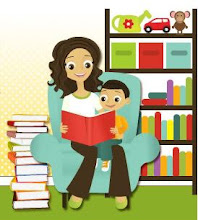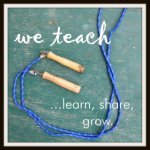
Happy Eating…oops… I mean... Happy Reading!

- Gingerbread Baby by Jan Brett
- Gingerbread Friends by Jan Brett
- The Gingerbread Man by Jim Aylesworth
- The Gingerbread Pirates by Kristin Kladstrup (thanks to roseuttmiller for this suggestion!)
- The Gingerbread Man by Karen Schmidt
- Musubi Man: Hawaii’s Gingerbread Man by Sandi Takayama
- The Gingerbread Cowboy by Janet Squires
- The Gingerbread Girl by Lisa Campbell Ernst
- Gingerbread Land by Katie Grrim
- The Gingerbread Kid Goes to School by Joan Holub
More Gingerbread Fun
Make gingerbread ornaments (scroll down to the bottom for the gingerbread ornament recipe but save all of the other recipes to use at a later time!)
· Gingerbread Cookies: Jan Bret has a recipe for Gingerbread Baby Cookies and Icing. When you cook with children, it’s always great to have a recipe chart. Here is a gingerbread recipe chart that you can use to create your own chart!
· Runaway Gingerbread: This was always a favorite activity in my classroom. After you make the gingerbread cookies (recipe above) take them to the kitchen to bake. While the children are busy or outside, take the cookies out of the oven and hide them someplace in your center/ school (someplace clean and safe of course!). When you bring the pan to the classroom to show the children they will see that the cookies are missing and have fun away! The class will have to go on a hunt around the school for their cookies! Have other teachers in on the gag so that the teachers can say things like, “I just saw your cookies in my block area…I think they went to the office…” The children will get so tickled at having to search for their cookies!
 · Gingerbread House: Visit your local craft store or general merchandise store (or even your local grocery store) and purchase a few gingerbread houses. This is a great way to get the parents involved – invite them in and assign one parent to a small group of children to make a gingerbread house! Of course, after you take plenty of pictures, have fun eating the gingerbread!
· Gingerbread House: Visit your local craft store or general merchandise store (or even your local grocery store) and purchase a few gingerbread houses. This is a great way to get the parents involved – invite them in and assign one parent to a small group of children to make a gingerbread house! Of course, after you take plenty of pictures, have fun eating the gingerbread! · Favorite Book Graph: Make a copy of the cover of 3-5 gingerbread books that the class has read. Have children write their names on a small gingerbread pattern and place it next to the story that they like the best. When the graph is complete, have the children count to see which story was the favorite. Use comparison language such as, “What story has the MOST/LEAST votes?”
· Visit these GREAT Jan Brett Links:





























































